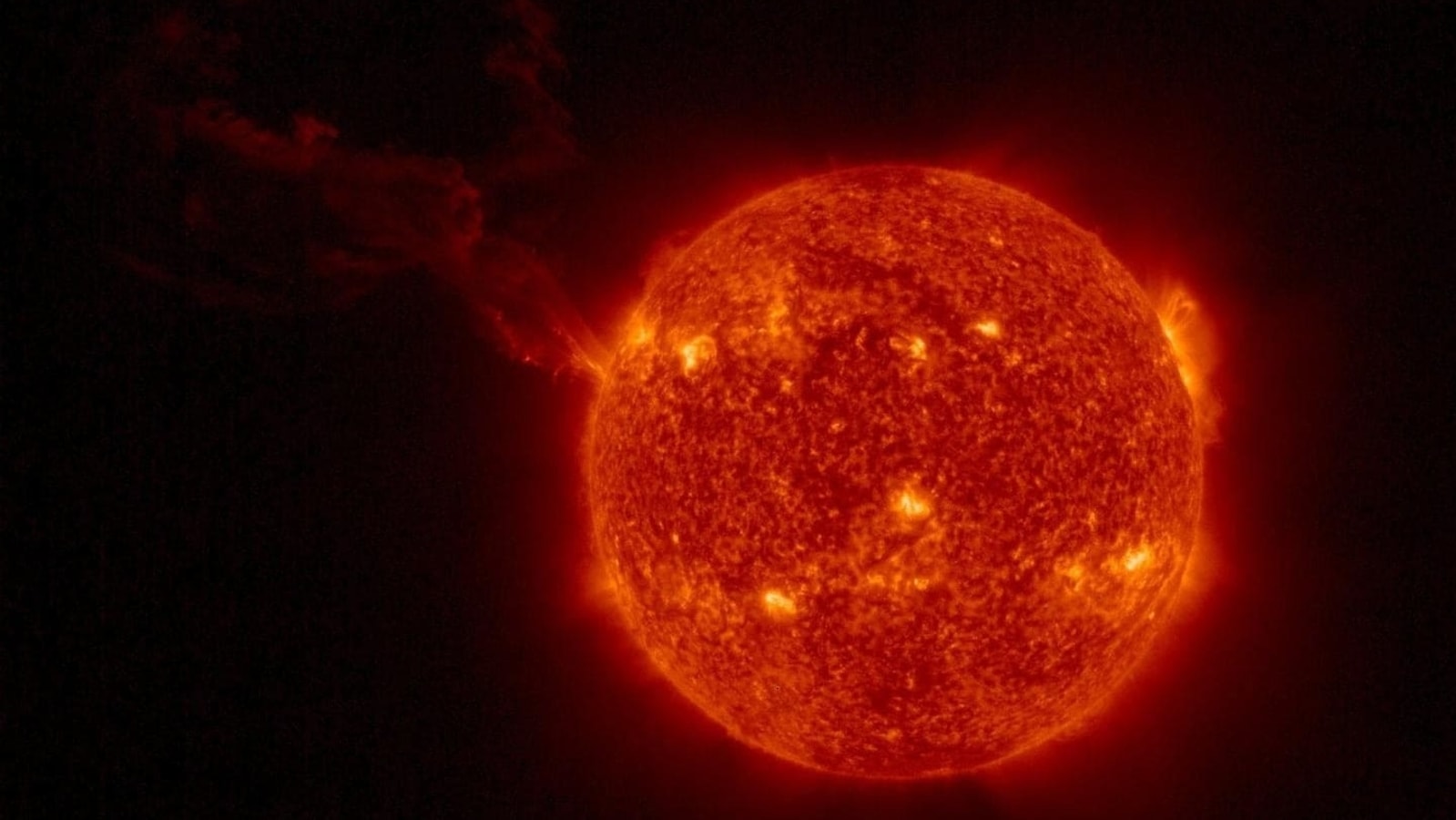Dangerous CME to strike the Earth and cause massive solar storm; Know the danger
A large cloud of coronal mass ejection (CME) is moving towards the Earth and will cause a solar storm on January 19. Know how it can impact us.






 View all Images
View all ImagesThe solar activity on the Sun continues to increase as astronomers point out multiple sunspots emerging there. Reports suggest that if this continues, the month of January 2023 can break a 20-year record for highest number of sunspots in a month. And this record has terrifying consequences for the Earth. Our planet has already suffered multiple solar storms and solar flare eruptions, but it appears that the onslaught will continue. Another cloud of coronal mass ejection (CME) is headed towards us and can strike the Earth on January 19. So, what could be the impact of such a solar storm?
The development was reported by SpaceWeather.com which noted on its website, “Minor G1-class geomagnetic storms are possible on Jan. 19th when a CME is expected to graze Earth's magnetic field. The CME was hurled into space on Jan. 14th by a dramatic twisting eruption in the magnetic canopy of sunspot AR3182”. It is also reported that auroras will be visible in the higher latitudes.
CME-induced solar storm to strike the Earth
According to the current prediction, the solar storm will be limited to G1-class, however the true intensity of the solar storm can only be assessed after it strikes as other external factors such as presence of solar winds can amplify its intensity. At its current stage, not much is expected from these magnetic disturbances. Apart from aurora formation, they can often disrupt GPS systems and radio communication over the region with the highest concentration of the magnetic fields. This can lead to delays in flight and ship timings.
The strongest solar storms (which can be as high as G5-class) can damage satellites, impact mobile networks and internet connectivity as well as cause power grid failure. Although, healthwise, humans will not be directly impacted by the radiation, the disruptions to emergency services and power outages at places of high importance like hospitals, can still cause a high number of deaths. The last time we suffered such a solar storm was in 1859 in an event which is now known as the Carrington event.
The tech that monitors the Sun
NOAA monitors the solar storms and Sun's behavior using its DSCOVR satellite which became operational in 2016. The recovered data is then run through the Space Weather Prediction Center and the final analysis is prepared. The different measurements are done on temperature, speed, density, degree of orientation and frequency of the solar particles.
Catch all the Latest Tech News, Mobile News, Laptop News, Gaming news, Wearables News , How To News, also keep up with us on Whatsapp channel,Twitter, Facebook, Google News, and Instagram. For our latest videos, subscribe to our YouTube channel.





























